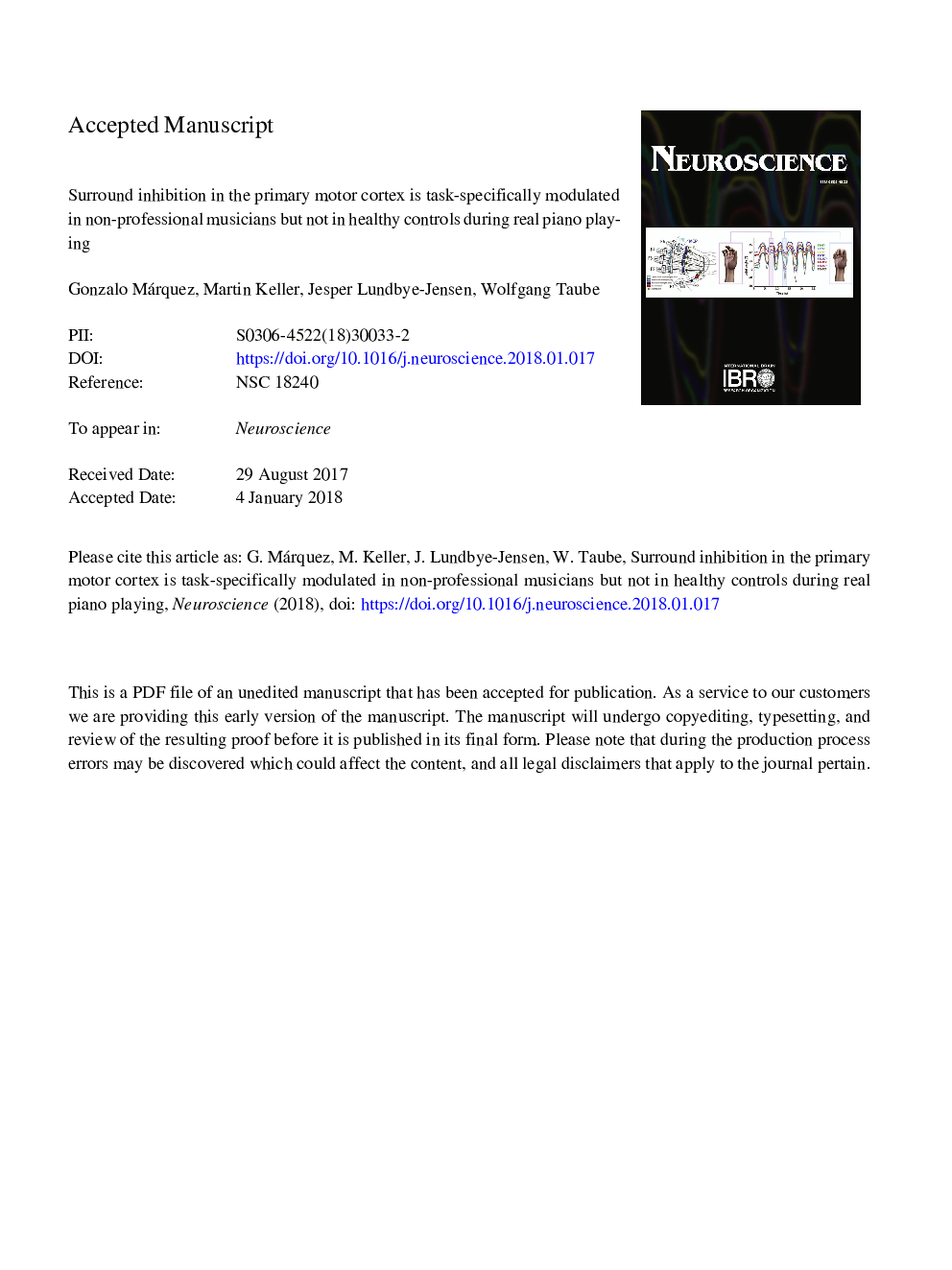| Article ID | Journal | Published Year | Pages | File Type |
|---|---|---|---|---|
| 8840957 | Neuroscience | 2018 | 26 Pages |
Abstract
Research has indicated that at the onset of a finger movement, unwanted contractions of adjacent muscles are prevented by inhibiting the cortical areas representing these muscles. This so-called surround inhibition (SI) seems relevant for the performance of selective finger movements but may not be necessary for tasks involving functional coupling between different finger muscles. Therefore, the present study compared SI between isolated finger movement and complex selective finger movements while playing a three-finger sequence on the piano in nine non-professional musicians and 10 untrained control participants. Transcranial magnetic stimulation (TMS) was applied to the contralateral motor cortex to assess SI in the first dorsal interosseous (FDI), abductor pollicis brevis (APB) and abductor digiti minimi (ADM) during the movement preparation and the late phasic phases. The results reveal stronger SI during the preparation phase than during the phasic phase (30.6% vs. 10.7%; Pâ¯<â¯0.05) in the isolated-finger condition in both musicians and controls. Results also show higher SI in musicians during the preparation phase of the isolated finger condition compared to the preparation phase of the three-finger sequence (40% vs. 15%; Pâ¯<â¯0.05). However, the control group did not show this task-specific modulation of SI (isolated: 25% vs. sequence: 25%; Pâ¯>â¯0.05). Thus, musicians were able to modulate SI between conditions whereas control participants revealed constant levels of SI. Therefore, it may be assumed that long-term training as observed in skilled musicians is accompanied by task-specific effects on SI modulation potentially relating to the ability to perform selective and complex finger movements.
Keywords
Related Topics
Life Sciences
Neuroscience
Neuroscience (General)
Authors
Gonzalo Márquez, Martin Keller, Jesper Lundbye-Jensen, Wolfgang Taube,
